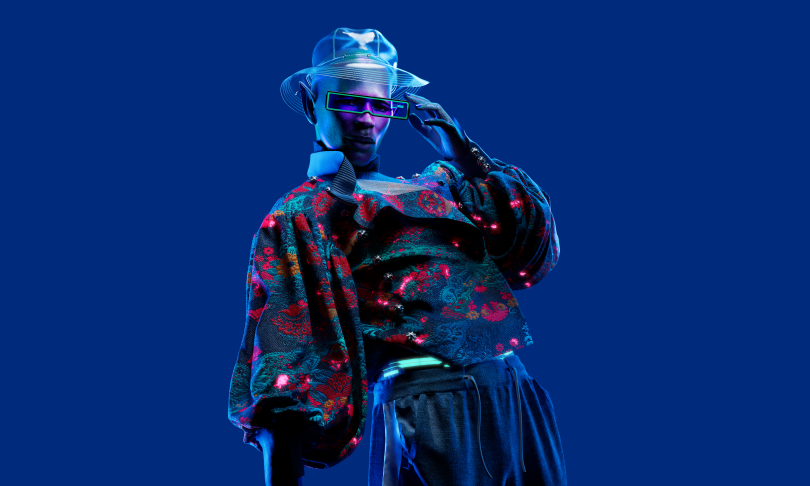A number of pioneers in the metaverse have suggested that fashion brands should invest in virtual worlds. While a fully formed metaverse—an interconnected, virtual ecosystem that overlaps with or offers an alternative to physical reality—is not yet possible, brands are experimenting with metaverse principles such as virtual fashion, extended reality and non-fungible tokens (NFTs). These experiments demonstrate the impact that virtual activities can have as marketing and community-building tools for fashion. In 2021, global spending on virtual assets reached $110 billion, with annual growth projected to be roughly equivalent to the growth in the gaming market. By 2024, spending on virtual assets is expected to reach $135 billion or higher.
Fashion brands are expected to expand their involvement in virtual activities, as these companies have ambitious plans to generate revenue from metaverse innovation and commercialisation. By investing in such activities today, they could generate more than 5% of their revenues over the next two to five years. If we separate the hype from reality, there are two clear and powerful use cases, discussed below, for virtual assets that have long-term potential.
Virtual Skins and Augmented Reality Fashion
Consumers in virtual spaces and on social media platforms are hungry for the creation and adaptation of online identities. Approximately 70 percent of US consumers from Gen-Z to Gen-X rate their digital identity as “somewhat important” or “very important.” China is another country where the demand for virtual goods is growing rapidly with 70 percent of luxury consumers purchased or consider purchasing virtual assets.
Some companies are using augmented reality to enable users to alter photos and videos. One example of this is the ability to change a user’s appearance and alter their avatar by changing their digital skins. For instance, DressX, a digital fashion start-up, selling virtual clothes that can be added to a photo and posted on social media, teamed up with H&M to launch a digital apparel collection. On the other hand, consumers change the appearance of their avatars regularly and even daily. In-game outfits and accessories have the potential to generate significant revenue. As an example, the cost of a Gucci Dionysus bag was $6 equivalent on the Roblox platform, but it was resold on the secondary market for more than $4,000 per bag.
The multi-billion-dollar gaming market will continue to offer opportunities for fashion brands looking to capitalise on its growing popularity. The market for gaming skins could reach $70 billion by 2024, up from $40 billion in 2020. Brands will need to turn to established gaming and platform partners to find inroads into this growing segment of the industry.
NFTs as Loyalty Tokens and Digital Twins
Much of the excitement surrounding blockchain-based non-fungible tokens has been focused on digital art collectibles, which are bought and sold for large sums of money. The compound annual growth rate of the value of the NFT market jumped 750 percent between 2018 and 2021, from $41 million to $24.9 billion.
However, the growing rate of NFT sales is already beginning to slow down. Indeed, the daily trading volume on the NFT marketplace OpenSea fell by 80% between February and March 2022. The surge in trading volume, and the amount of money involved, have raised scepticism from some market participants, suggesting that this could be a short-lived bubble. Notwithstanding the hype surrounding blockchain, new use cases that address industry pain points will emerge. Applications will support community building, product traceability, and authenticity.
As the technology develops, fashion brands will likely use NFTs to engage with consumers in a more practical way, using NFTs as loyalty tokens. Brands like Gucci, Adidas, and The Hundreds have experimented with non-fungible tokens (NFTs) and offered benefits, including early access to new NFT drops and physical products. These digital collectibles can be used in virtual worlds. Brands are starting to add more “utility” to collectible NFTs, which could make buying more worthwhile for consumers and translate into a long-term opportunity for brands.
The most compelling use of NFTs is in the field of digital twins, which host information about a physical or digital product’s history, authenticity, and ownership. This is especially beneficial to luxury brands in their battle against counterfeiting. The launch of blockchain technology has enabled the creation of digital twins, which are theoretically tamper-proof records that are used to track products, and unlock the ability of brands to collect royalties from the resale. industry startups such as Aura Blockchain Consortium, Lablaco, and Arianee are aiming to make blockchain-based digital twins commonplace.
A 4-step Sustainable Revenue Stream Plan for Brands in the Metaverse
Stage 1 (0-2 years)
At this stage, brands should come up with one-off marketing and customer engagement projects. The estimated revenue from metaverse activities in this stage is 0-5%.
Stage 2 (2-5 years)
During this stage, brands should strategically think of accomplishing sustainable sales of virtual goods and treat NFTs beyond collectibles. The estimated revenue in this stage is higher than 5%.
Stage 3 (> 5 years)
Fashion revenue opportunities offered to brands at this stage comprise of the sale and resale of virtual goods at scale and the creation of meta-worlds by fashion brands. Brands can generate more than 10% of revenue if the right decisions are taken at this stage.
Stage 4 (uncertain)
At the fourth stage of uncertainty, fashion brands should strive to establish a channel in the metaverse equivalent to e-commerce in importance.
Team up, Create, and Acquire
The retail market for virtual goods is expected to grow in size and complexity, as will the products and services sold within these spaces. While a few disruptors such as marketplaces for digital fashion will solely focus on virtual goods, most tech-savvy, innovative brands will tap the opportunity to diversify revenue streams and target Gen-Z and Millennial consumers. Companies with limited in-house capabilities that want to experiment with the metaverse can:
- Team up with tech or gaming companies like Gucci and Burberry did. Gucci has collaborated with Zepeto, a social network and avatar simulation app, to produce paid-for digital skins. In a similar vein, Burberry partnered with Tencent to launch a limited-edition scarf featuring the Chinese virtual influencer Ayayi.
- Balenciaga has created a “metaverse business unit” dedicated to metaverse marketing and commerce. Likewise, brands should build their own capabilities by recruiting talent with tech-related skills alongside a deep-rooted understanding of the metaverse and its communities.
- Acquire brands like Nike acquired RTFKT, a virtual fashion studio.
Bottom line:
As it was with e-commerce in its early period, some metaverse-related ventures will likely fail outright or need rapid iteration. However, fashion companies are well-positioned to capitalise on the engagement with virtual worlds and the metaverse by drawing on their connection to self-expression, status, and creativity. Executives should think about ways to make their companies successful based on their goals and the customers they want to attract.




